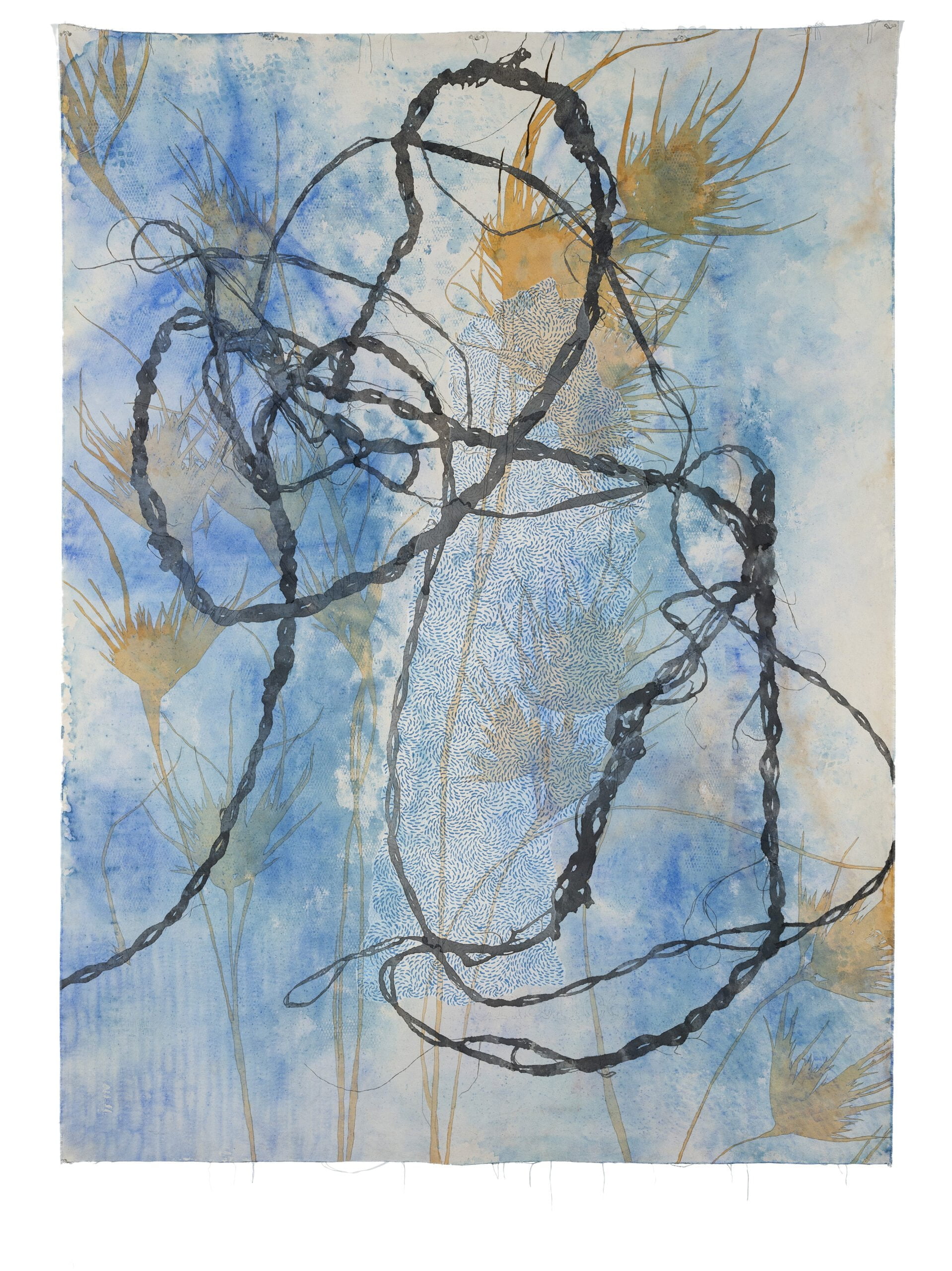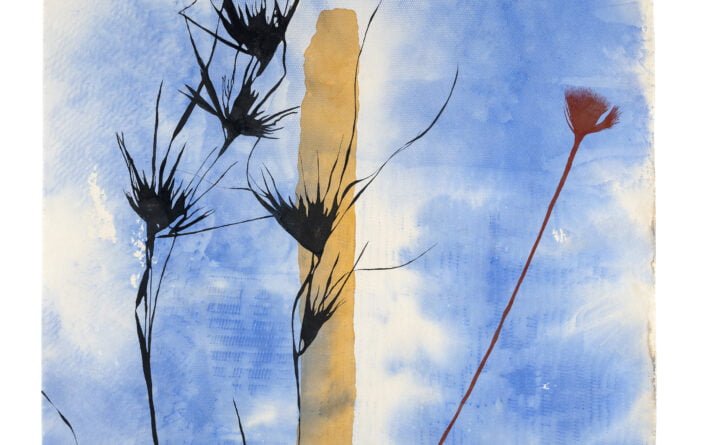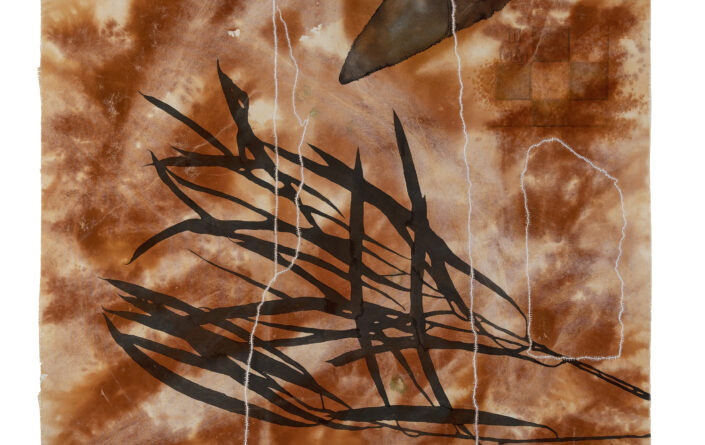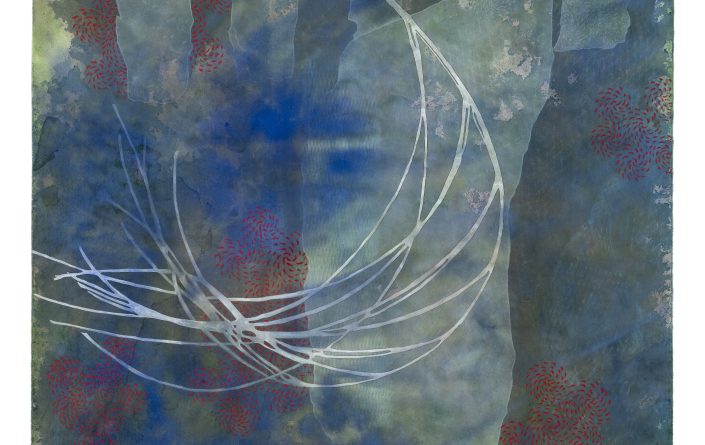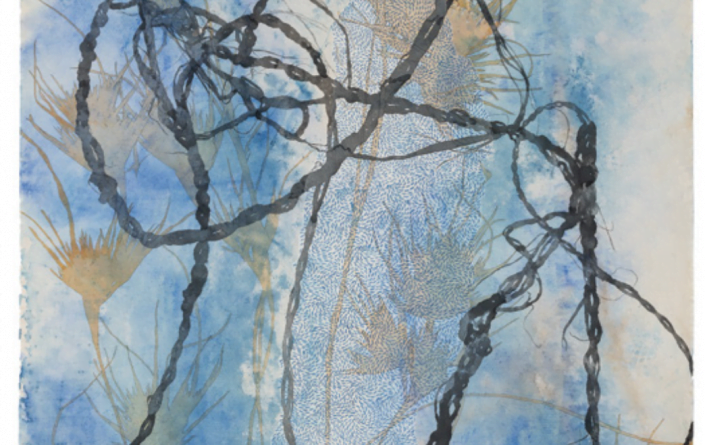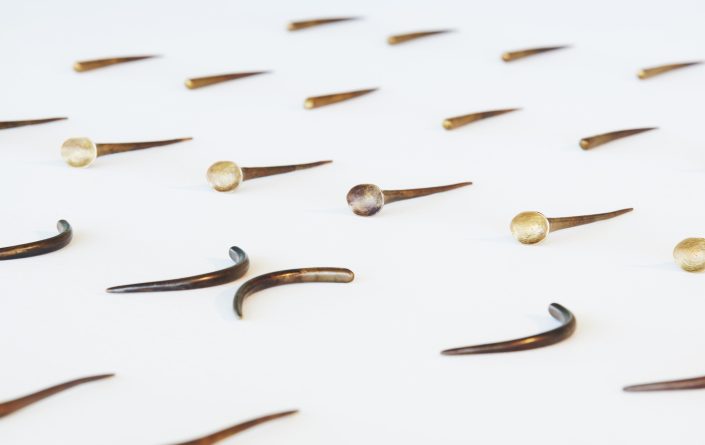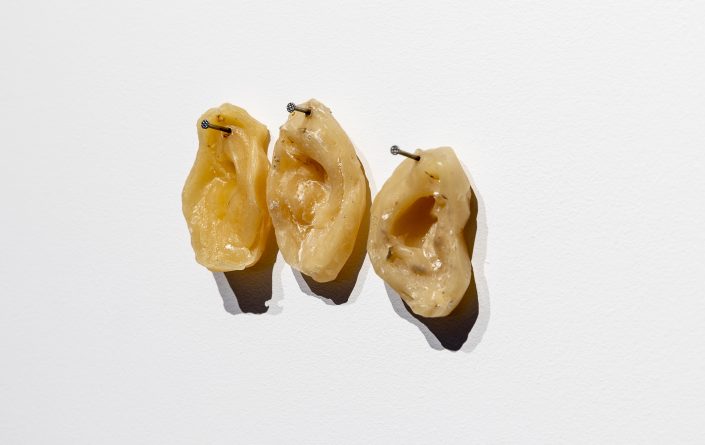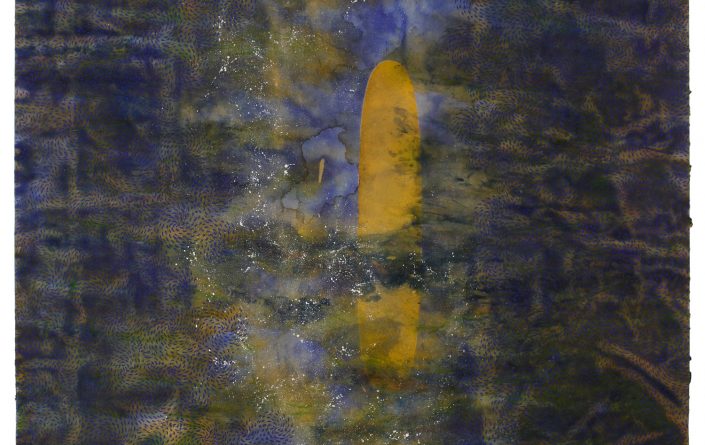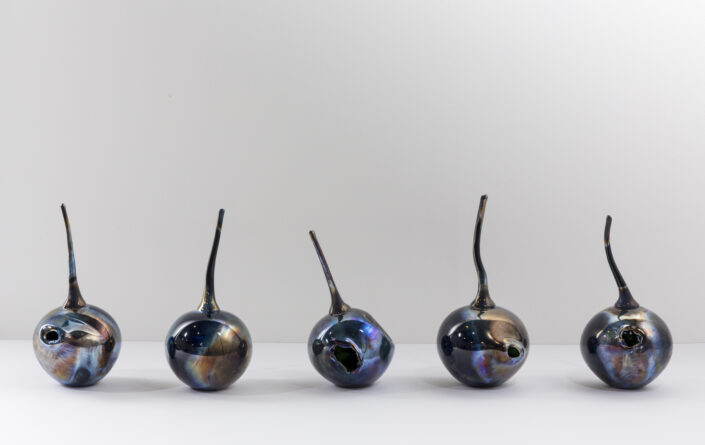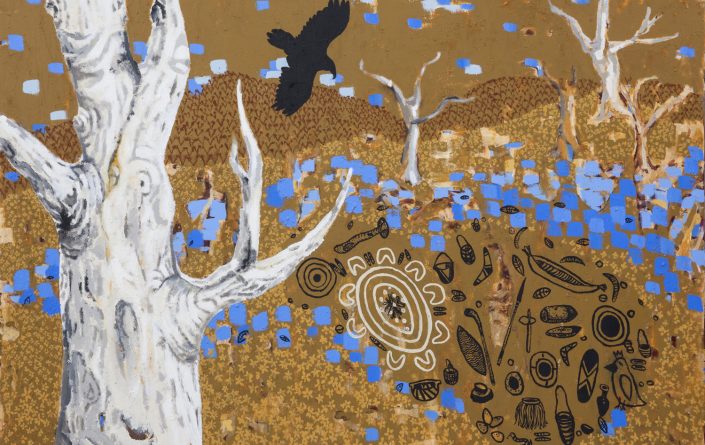Judy Watson
Judy Watson was born in Mundubbera, Queensland and lives and works in Brisbane. Watson’s Aboriginal matrilineal family are Waanyi, whose Country is located in north-west Queensland. Watson works from site, archives and collective memory to reveal the fault lines of history within place and Country, lays bare the impact of colonial history and the institutional discrimination of Aboriginal people, celebrates Aboriginal cultural practice, and registers our precarious relationship with the environment. Her works comprise painting, printmaking, drawing, video, sculpture and public art.
Watson has exhibited extensively in Australia and overseas. Ikon Gallery, Birmingham, UK presented Judy Watson in 2020, a version to be shown at TarraWarra Museum of Art, Healesville, Victoria and touring. Judy Watson: the edge of memory was exhibited at the Art Gallery of New South Wales, Sydney in 2018. In 2015, her work was included in Artist and Empire: Facing Britain’s Imperial Past, Tate Britain, London and Indigenous Australia: Enduring Civilisation, British Museum, London. A major survey of Watson’s works made from 1989 to 2003, sacred ground beating heart, was exhibited in 2003 at the John Curtin Gallery, Curtin University, WA, and at the Institute of Modern Art, Brisbane in 2004. Asialink toured a version of sacred ground beating heart in 2004 to Vietnam, Sri Lanka and the Philippines, and Australian venues. Watson co-represented Australia in the 1997 Venice Biennale.
Major awards received include the Australia Council Visual Arts Award (Artist) in 2015; in 2006, the National Gallery of Victoria’s Clemenger Contemporary Art Award, and the Works on Paper Award at the 23rd Telstra National Aboriginal & Torres Strait Islander Art Award; and, in 1995, the Moët & Chandon Fellowship. In 2018, she received a Doctorate of Art History (honoris causa) from The University of Queensland.
Watson’s work is held in major Australian and international public collections, including: National Gallery of Australia; all Australian state art galleries; Museum of Contemporary Art / Tate collections; Taipei Fine Arts Museum; St Louis Art Museum, USA; The British Museum, London; Museum of Archaeology and Anthropology, University of Cambridge, UK; Library of Congress, Washington, USA; Kluge-Ruhe Aboriginal Art Collection, University of Virginia, USA; as well as significant private collections.
Watson has received major public art commissions, including bara, to be installed at Bennelong Point, Sydney in 2020; tow row, bronze sculpture installed outside GOMA, Brisbane, 2016; ngarunga nangama: calm water dream, 300-square-metre artwork, 200 George Street, Sydney; yara, Flinders University, Adelaide, 2016; living well, murri kitchen and fragments, grounds of Townsville Hospital, 2016; water memory, Queensland Institute of Medical Research foyer, 2011; freshwater lens, beneath Turbot Street Overpass, Brisbane, 2010; fire and water, Reconciliation Place, Canberra, 2007; museum piece and two halves with baler shell, Musée du Quai Branly, Paris, 2006; heart/land/river, Brisbane Magistrates Court foyer, 2004; ngarrn-gi land/law, 50-metre etched zinc wall, Victorian County Court, Melbourne, 2002; walama forecourt, sculptural installation at Sydney International Airport, 2000; wurreka, 50-metre etched zinc wall, Melbourne Museum, 2000.
Judy Watson: blood language, a monograph by Judy Watson and Louise Martin-Chew, was published by The Miegunyah Press, Melbourne University Publishing in 2009.
Artworks — Exhibitions
-

Judy Watson standing stone, kangaroo grass, red and yellow ochre 2020
Acrylic and graphite on canvas 250 x 181.5 cm Courtesy of the artist and Milani Gallery, Brisbane Photograph: Carl Warner
-

Judy Watson standing stones, gumbi gumbi, stone tool 2020
Earth, graphite, pastel, acrylic, cotton on canvas 229.5 x 181 cm Courtesy of the artist and Milani Gallery, Brisbane Photograph: Carl Warner
-

Judy Watson spot fires, our country is burning now 2020
Acrylic, pastel, graphite on canvas 194 x 181 cm Courtesy of the artist and Milani Gallery, Brisbane Photograph: Carl Warner
-

Judy Watson standing stone, kangaroo grass, bush string 2020
Acrylic, graphite on canvas 246 x 181 cm Courtesy of the artist and Milani Gallery, Brisbane Photograph: Carl Warner
-

Judy Watson resistance pins 2018
Cast bronze with patina finish Dimensions variable Courtesy of the artist and Milani Gallery, Brisbane Photograph: Cian Sanders
-

Judy Watson 40 pairs of blackfellows’ ears, lawn hill station part of salt in the wound 2018
Cast beeswax Dimensions variable Courtesy of the artist and Milani Gallery, Brisbane Photograph: Andrew Curtis
-

Judy Watson sacred water 2010
Pigment, pastel and acrylic on canvas 212 x 213 cm Courtesy of the artist and Milani Gallery

